NOSTALGIC MEMORIES OF-
ZANZIBAR
(Following pictures sent by Eqbal Rupani through Ameer Janmohammed - Thanks, Harjinder)
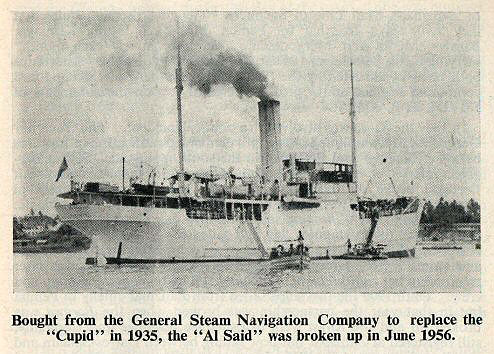
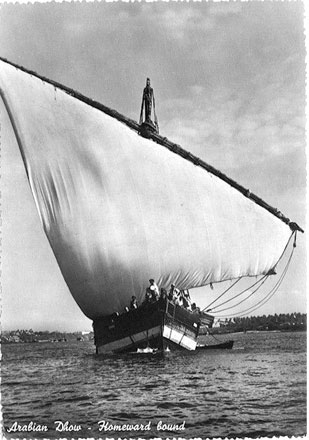
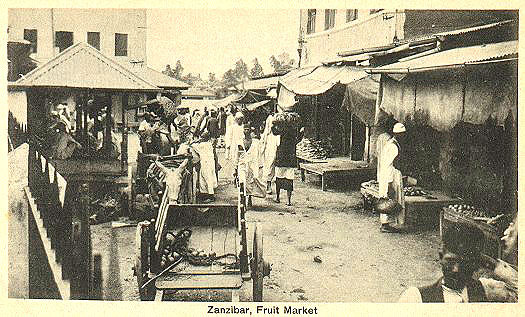
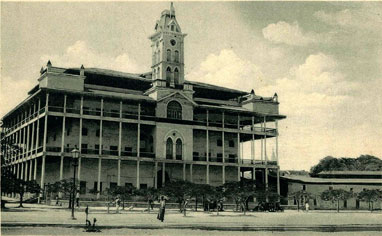
Beit-Al Ajaib
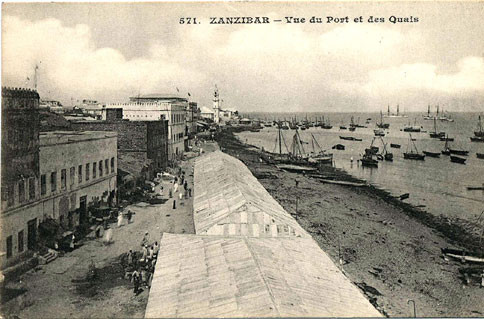
Boat harbour 1890
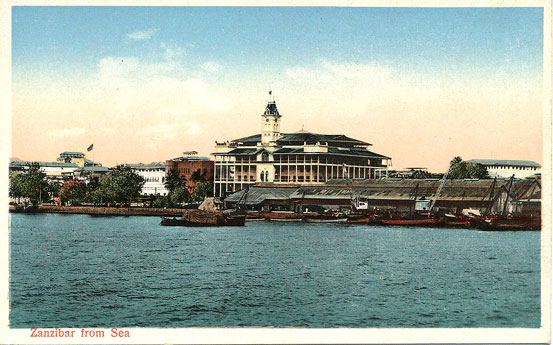
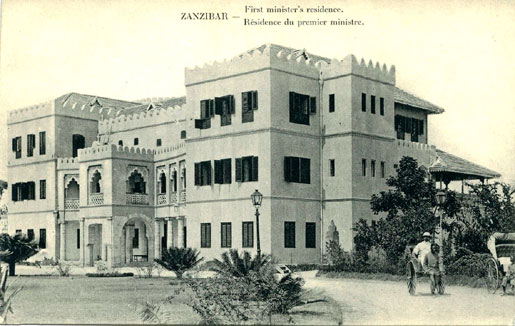
British residence
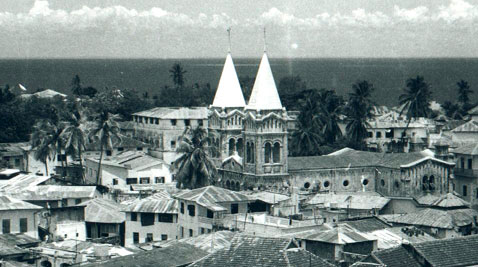
Capitol Art Studio
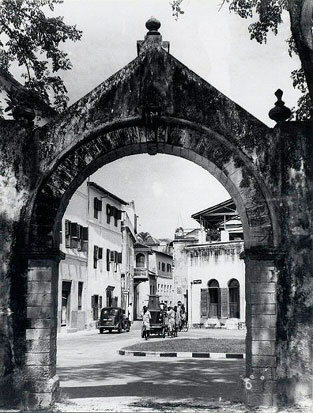
Town Arch
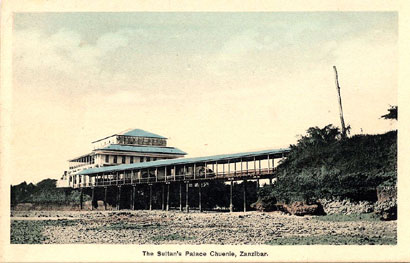
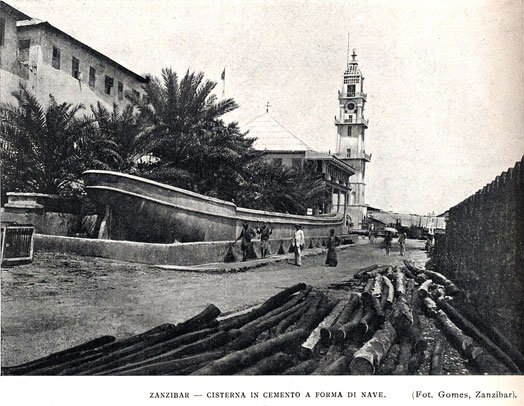

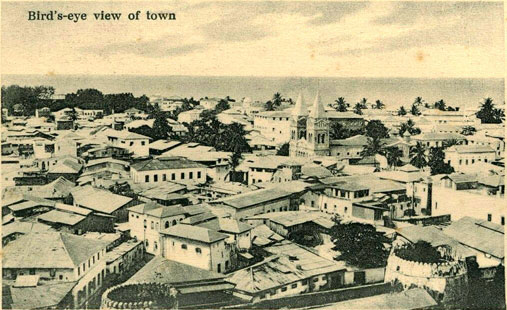
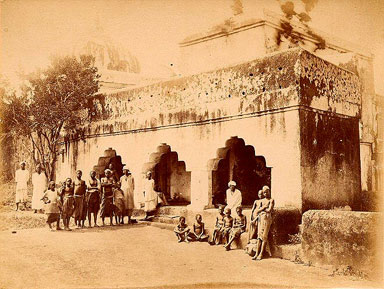
CountryBathHouse
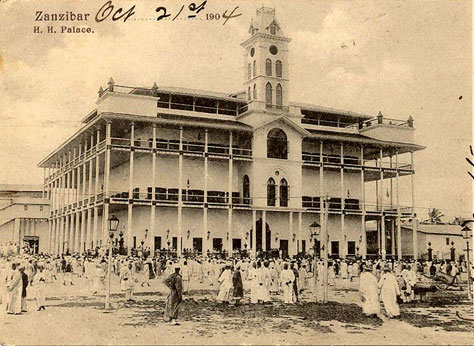
READ
'AMAZING HOW ADVANCED ZANZIBAR WAS'....CLICK FOR PDF
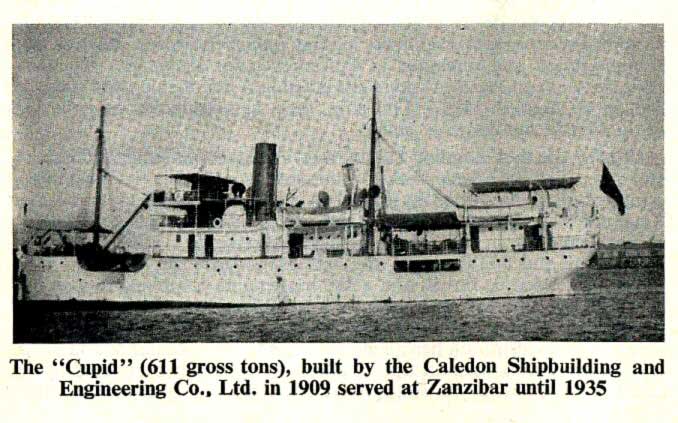

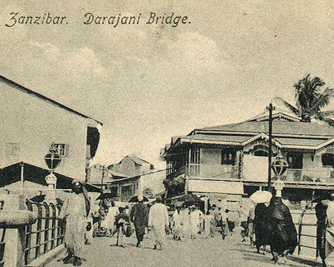
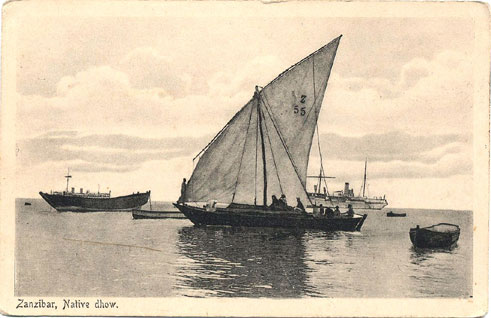
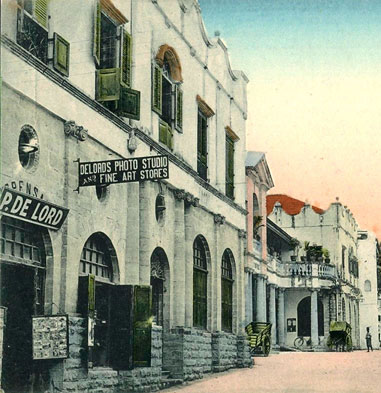
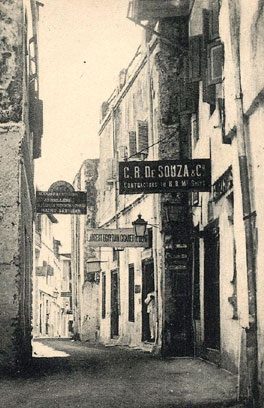
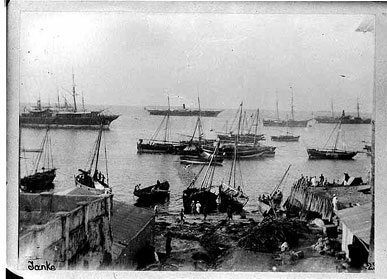
Dhows Ships Zanzibar
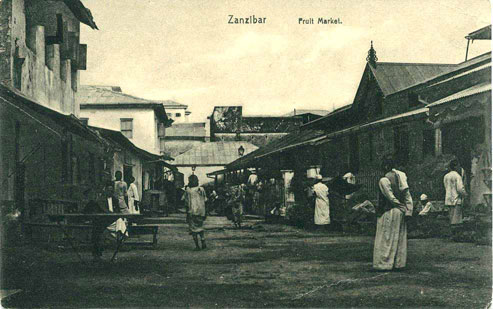
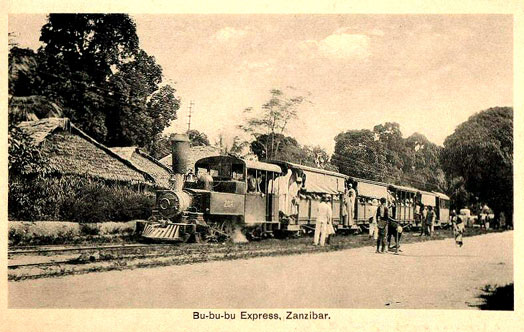
Bu-Bu-BuExpress1908
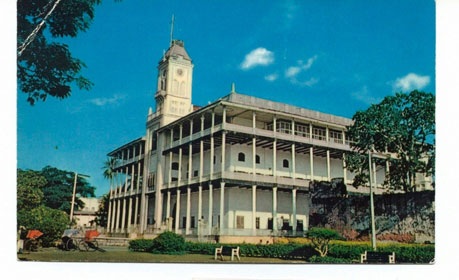
HouseofWonders1955
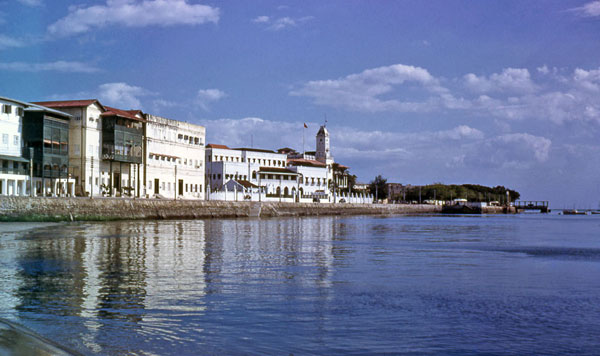
Zanzibar from the sea 1954 (sent by Ron Bullock)
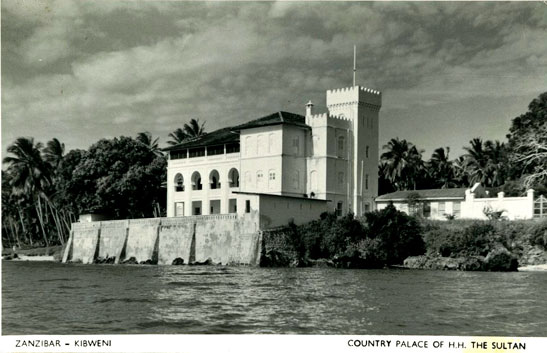

Sultan's love for women inspired a railway line
By Joe Ombuor
Long before the Kenya /Uganda railway and its world famous man eating lions took off from Mombasa and landed in Kisumu in 1901, a railway line in Zanzibar had ran on the lure of beautiful women fetched from far and wide to entertain an erotic Arab Sultan.
The 14 kilometre line from the Sultan’s palace at Stone Town to Chukwani was constructed in 1879 to run via the sea side Mahrubi palace built by Sultan Seyyid Barghash bin Said for his relaxation and enjoyment with belles from the East African region, Persia, the Arabian Peninsula and beyond.
The ‘trains’ were Pullman cars pulled by mules until 1881 when steam tank locomotives imported from India came into the scene. The ‘fun’ train screeched to a halt with the sudden death of Seyyid Barghash. Records at the Mahrubi palace ruins on the Eastern outskirts of Zanzibar town show that an accidental fire that razed down the ‘palace of romance’ hit the Sultan like a thunderbolt, and the resultant shock killed him early –1889.
Located metres away from the sea to tap on the abundant breeze, Mahrubi palace had several bedrooms for women and a sitting room where they assembled after bathing in three pools in the compound. Then pools were never destroyed by the fire and save for the greenish water, are still intact.
Sexual escapades
After bathing in the first pool, the women selected by the sultan for the day’s sexual pleasure from their sensual beauty and charm went to the second pool to further clean up and on to a room upstairs where the Sultan would be waiting after a session of massage and other exercises.
The women were housed in seven rooms downstairs.
To enhance his potency in those days when Viagra was still several life times away, Sultan Barghash had a traditional treat comprising eight different ingredients that included octopus soup ginger, cinnamon, black pepper and other foodstuffs believed to be aphrodisiacs.
The Sultan was married to one wife who bore him one son, but had 99 concubines at Mahrubi palace at any given time. His bedroom had pools for hot and cold water where he bathed before and after his sexual escapades.
Clean water for use in the leisure palace was carried in raised concrete aqueducts from a river source five kilometres away.
A furrow carried ablution water to and from the sea to clear the toilets of waste. The facilities, though dilapidated, are still intact.
The entrance to the ruins from the Darajani/ Bububu Road is lined with huge mango trees dating back to the days of Sultan Barghash. It is said he brought the mangoes from India where he lived for a while as punishment for attempting to outmanoeuvre his elder brother out of power.
Barghash who ruled Zanzibar from 1870 to 1888 is also credited with the introduction to the Eastern African coast of the uniquely beautiful Ashok trees from India.
The trees that grow to great heights have elegant inverted leaves pointing downwards to form an umbrella shaped tip.
Expensive tastes
Better educated than his predecessors, Barghahsh had a penchant for expensive Western tastes and instantaneous life.
Besides his obsession with attractive women, he gave East Africa its first glimpse of electricity when oil streetlights were installed in Stone Town in 1870. Years later, he initiated the building of a power station near the harbour palace complex and used it to illuminate as many royal buildings as possible.
The lighthouse that stood in front of his palace became the scene of so many decorative bulbs prompting sailors from the Western world to refer to it as the Christmas tree of Africa.
The railway line that died with Sultan Barghash resurrected nearly two decades later when a new line on the path of the old one extended to Bububu, around 10 kilometres away from Darajani.
It ceased to operate in 1930. Zanzibar has no railway track. A life-sized portrait of Seyyijd Barghash is among attractions at the people’s palace, the former residence of the Sultan of Zanzibar.
Source:The Standard | Online Edition :: Sultan's love for women inspired a railway line (contributed by Ameer Janmohammed)
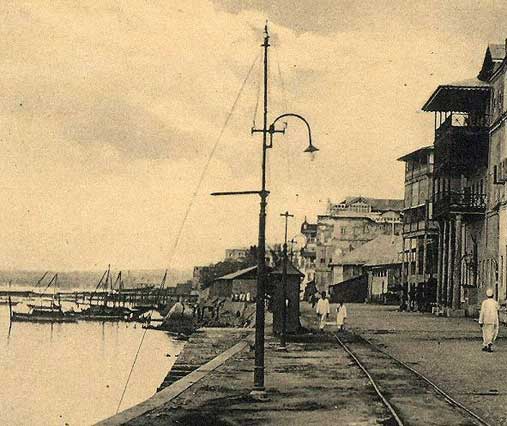
Mizigani Street Light and train track
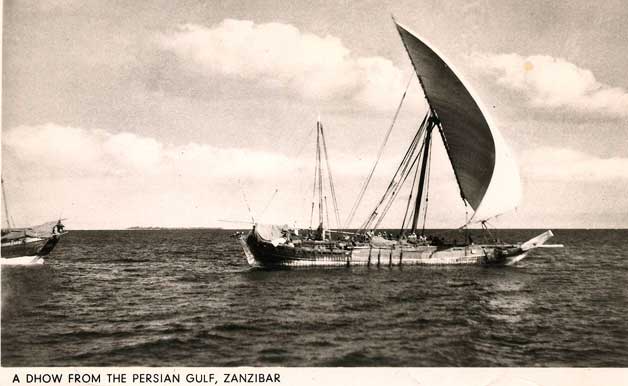
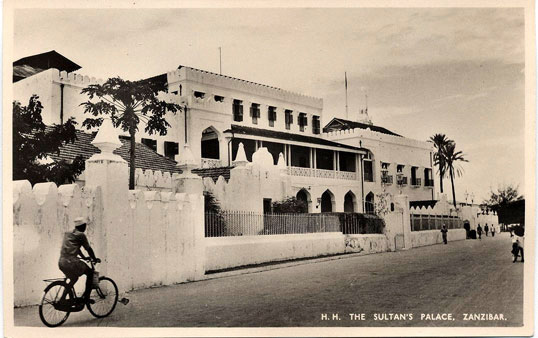
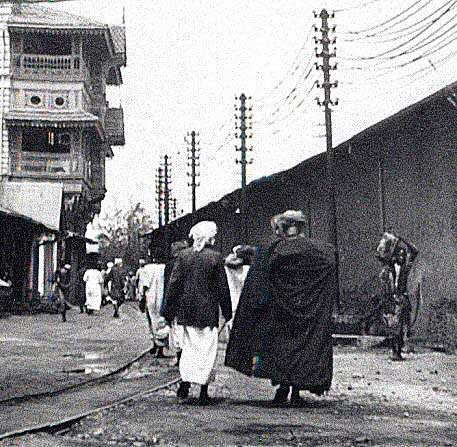
Street scene with electricity poles
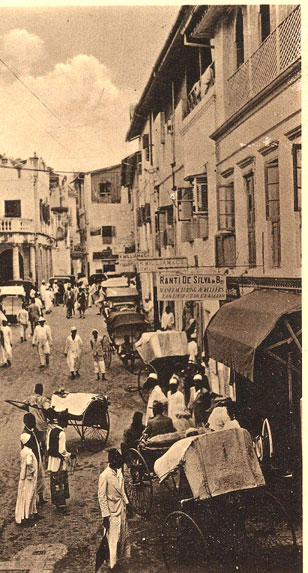

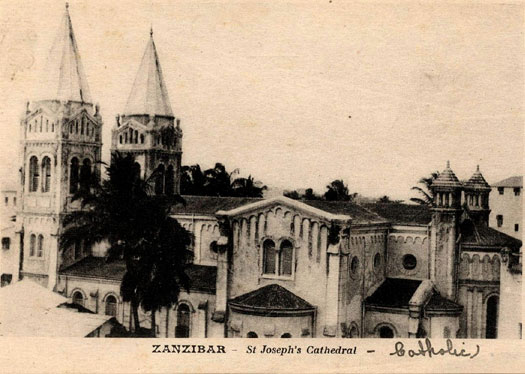
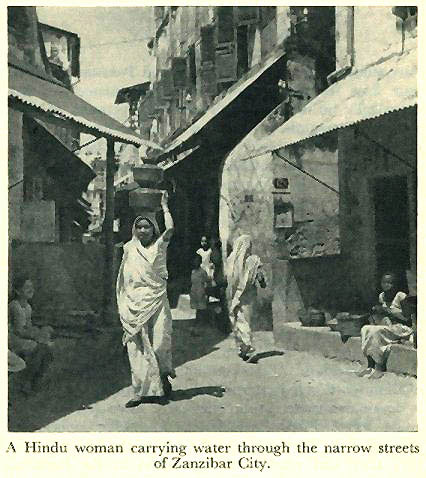
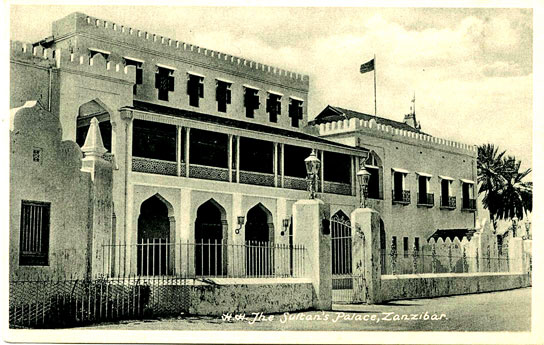
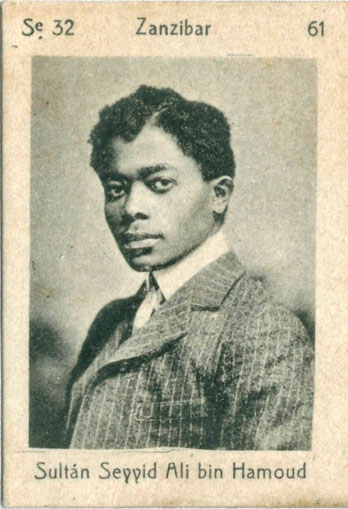
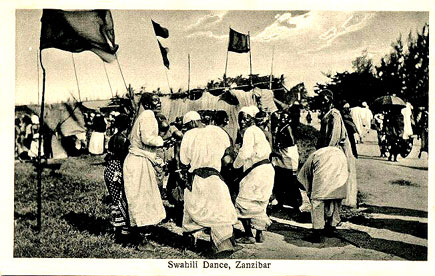
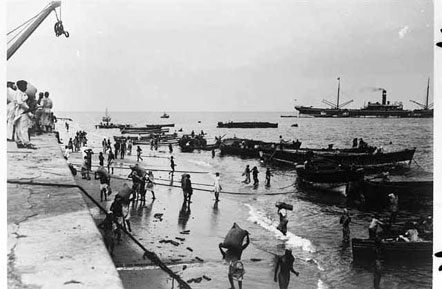
Unloading at harbour1900
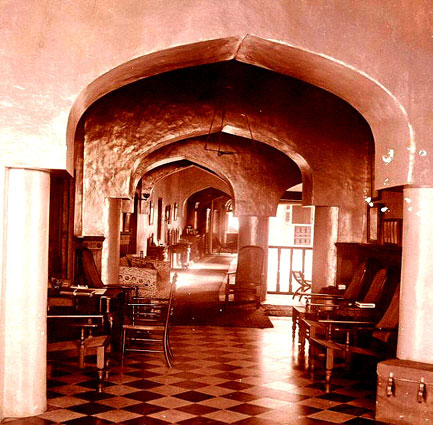
Hotel Interior - Zanzibar
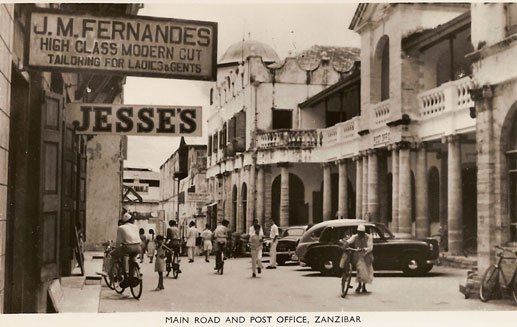
( photo courtesy Rama Dunn)
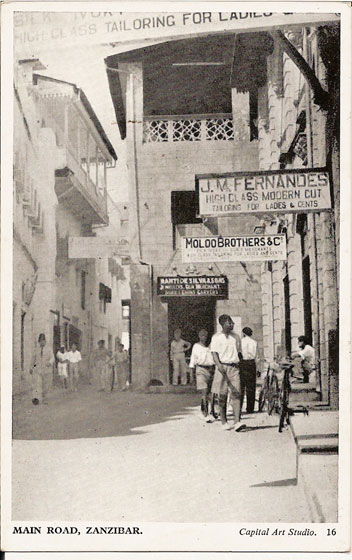
( photo courtesy Rama Dunn)
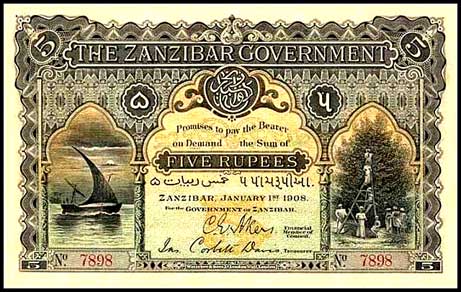
A 5/- Rupee Zanzibar currency note - 1908 (sent by Ameer Janmohammed)
CLICK ON THIS TO SEE THE BEAUTY OF ZANZIBAR (sent by Ameer Janmohammed)
Please click the LINK below and enjoy the beautiful video clips taken during 40s in Zanzibar , Seycheles and Mombasa.
Those who has lived in Zanzibar,Tanzania,Kenya or Uganda will interest this link,
so have a go.
http://www.saudiaramcoworld.com/issue/201102/zanzibar.cloves.and.stone.htm
Street Food in Zanzibar
Zanzibar, known as the spice island, is situated in the Indian Ocean, one of the world's oldest and largest free trade zones.
As a result it has been been a destination for merchants of all colours and creeds for centuries - the old trading port was a 19th century Omani capital.
This trade and migration have marked the history of the many communities living along its shores off the coast of the Tanzania mainland in East Africa. As a result Zanzibar has one of the richest and most diverse food cultures in East Africa encompassing influences from Arabia, India and Europe.
Street food is a term often interpreted literally as food served on the streets but in Zanzibar the real roads are the ocean and the presence of seafood is everywhere on the menus.
The island's wealth was largely founded on the spice trade until the advent of tourism and this heavily influences trademark local dishes such as bokoboko.
But the tourism boom has also heralded the decline of Zanzibar as a major trading port.
Al Jazeera visits the island to discover the changes taking place, sample the many local flavours, finding time for a spot of bullfighting and even a game of football - the real local passion.
http://english.aljazeera.net/programmes/general/2009/01/200916101448660804.html
Have a look at this modern Zanzibar (sent by Elyas sardharwala)
|
Reviving Zanzibar's oldest theatre
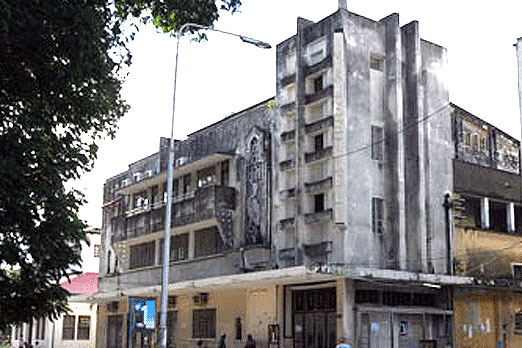
The once imperial building in the historic Stone Town of Zanzibar. FILE | AFRICA REVIEW |
By BILLIE ODIDIPosted Thursday, June 30 2011
The once imperial building in the historic Stone Town of Zanzibar now stands dilapidated. It is a pale shadow of its once thriving stature as one of Africa’s first cinema halls.
Unlike the busier times when it still screened, the Majestic is shorn of its grandeur; the imposing architectural masterpiece stands only as a monument to a bygone era when the cinema attracted film lovers eager to watch the regular blockbusters screened there.
The Royal Cinema Theatre, as it was known, has once before emerged from its ruins. In 1953, the hall was destroyed by a fire and replaced two years later by a cinema hailed as one of best designs of the time, where locals thronged to watch mainly Indian and Egyptian films and some Western classics.
Amidst the coconut palm fringed golden sand in this tropical island, the Majestic standing on the Indian Ocean island is desolate, with a leaking roof and broken chairs inside the hall, but the state of the cinema has not stopped locals from watching films here.
This was the only remaining cinema on the island after another venue, the Cine Afrique, was recently closed and turned into a supermarket. As it is, plans are underway to convert the Majestic into an office block for civil servants.
No cinema halls
“Even though there is no roof on the cinema at the moment, the local people often set up a projector of their own and screen films, even if it rains on their heads,” says visiting English filmmaker Nick Broomfield.
The award-winning director behind documentaries like Biggie and Tupac and Battle for Haditha, has been holding workshops at this year’s Zanzibar International Film Festival ( ZIFF). He has used this platform of the East Africa’s biggest arts and film festival to launch a campaign to restore the Majestic Cinema to its former glory.
(sent by Pushpendra Shah)
SEE ZANZIBAR 50 YEARS AGO THROUGH PATHE NEWS (sent by Elyas Sardharwala)
http://www.britishpathe.com/record.php?id=415
Click to see many videos of Zanzibar including Footage of 1964 Zanzibar Massacre (sent by Elyas Sardharwala)
http://www.dewani.ca/video/17.html
==========================================================================
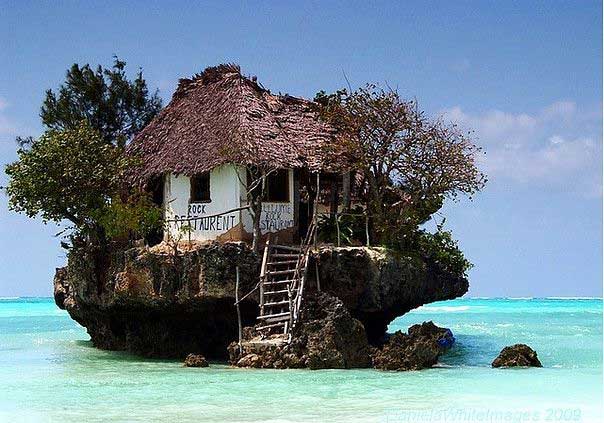
A restaurant on the east coast of Zanzibar which can be accessed by foot or boat depending on the tide.
READ VERY INTERESTING MEMOIRS OF ABDUL RAZAK FAZAL ABOUT HIS LIFE IN ZANZIBAR. A VERY INTERESTING ARTICLE (sent by Pushpendra Shah)
=======================================
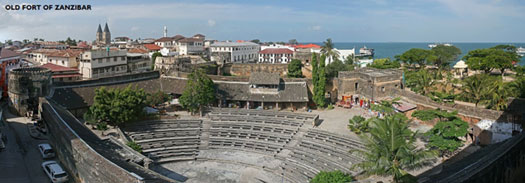
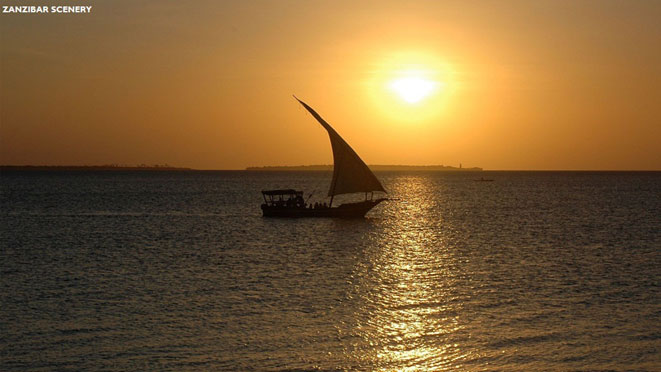


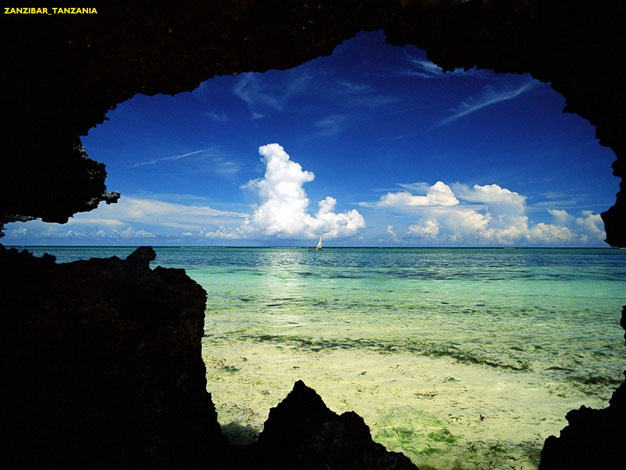
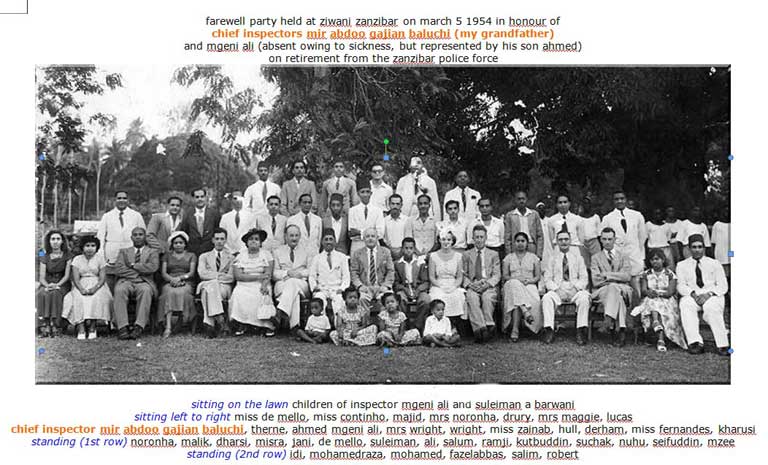
I attach a copy of a photograph of a police party in Zanzibar in 1954 where I was working for Smith Mackenzie & Co. I don't know who the author of the photo is.Best wishes.Bill Hall (Thanks – Harjinder)